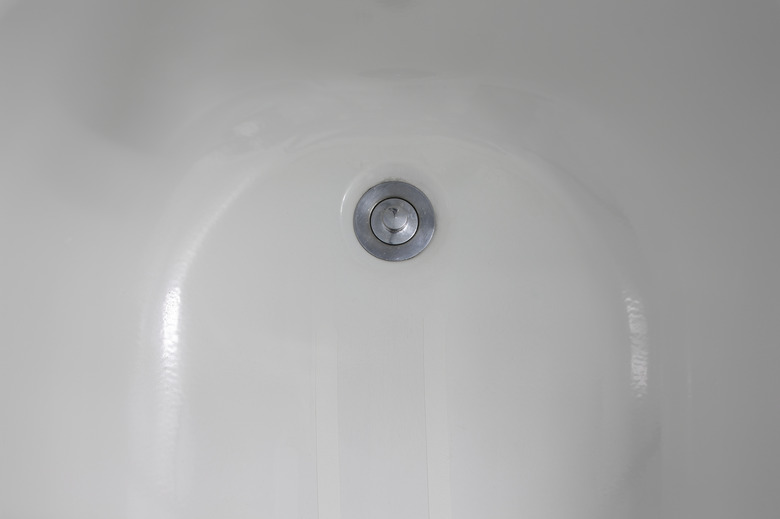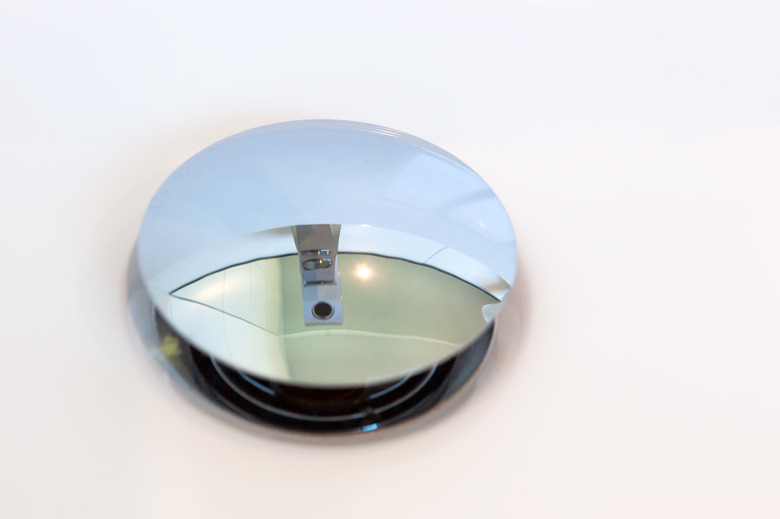The 3 Bathtub Drain Parts Every Homeowner Should Know
We may receive a commission on purchases made from links.
Finding bathtub drain parts and making repairs can be a bit confusing because bath drains come in several styles and configurations. Despite all the different types of drains and parts, all tub stoppers are designed to do the same thing: hold water in the tub and allow it to drain through when desired. Making a repair to your drain requires using the correct bathtub drain parts, and to do this, you'll need to determine what type of tub drain you have.
Bathtub Drain Parts
Bathtub Drain Parts
The waste and overflow system of a bathtub consists of a bath drain stopper mechanism and a waste and overflow pipe assembly. There are three main types of bathtub drain stoppers: the pop-up/lift-up, the plunger/lift bucket gate, and the trip lever/rocker arm pop-up. The stopper mechanism is integrated with the waste and overflow drain pipe assembly comprised of a riser, a drain arm and a sanitary tee. You'll most likely rarely see these bathroom drain parts because they are located behind and beneath the tub.
The riser, also known as an overflow riser or overflow pipe, connects to the top of the sanitary tee with a compression nut and ferrule. The top of the riser is connected to the back of the tub opposite an overflow face plate fitted to the front of the tub. Screws secure the face plate to the riser, and a rubber gasket creates a watertight seal between the riser and the tub wall. The overflow face plate has a hole or slot on its underside that allows water to drain into the riser pipe, preventing an accidental tub overflow. This system allows water to drain away even when the stopper has closed off the main tub drain.
The drain arm connects to the horizontal outlet of the sanitary tee with a compression nut and ferrule. At the end of the arm is a threaded tub shoe that lies against the bottom of the tub at the drain hole with a rubber gasket between the tub shoe and the tub bottom to seal it. This is the area at the bottom of the tub where the tub drains. The drain flange is screwed into the tub shoe with plumbers' putty applied under the rim to seal against leaks, and it is covered with a stopper or decorative strainer screen.
A tailpiece is threaded into the bottom of the sanitary tee and is attached to the tub's P-trap and drain with a nut, ferrule and trap adapter. The water from the tub drain and the overflow drain flows through here and into the drain pipes. Waste and overflow assemblies come in different lengths and can be made of brass, PP (polypropylene), ABS or PVC. Brass is the most durable but is also the most expensive. What type of overflow kit you install may be determined by local code.
Pop-Up Drain Stoppers
Pop-Up Drain Stoppers
Your tub has a basic pop-up stopper if there is no trip lever located on the overflow face plate. Because there is no trip lever or trip lever mechanism to remove, these types of stoppers are among the easiest kinds of bathroom drain parts to remove and replace. However, within this category there are several different types of pop-up drain stoppers. The push-pull stopper is pushed down to close and pulled up to open using a knob in its center. The stopper can be removed by loosening a setscrew located under the knob. The knob can be removed by hand or with a pair of pliers.
A lift-and-turn stopper has a knob on top and looks very similar to a push-pull stopper, but the knob has to be lifted and turned in one direction to open and turned in the other direction to close. A lift-and-turn stopper can be removed by unscrewing the setscrew under the knob. If there is no setscrew, turn the stopper counterclockwise to remove it from the strainer. A lift-and-turn stopper can be replaced with a push-pull stopper, which is easier to use.
A toe-touch stopper is similar to a push-pull stopper, but you push it with your toe to open and close it. The toe-touch stopper can be removed and replaced by unscrewing the cap and then unscrewing the cylinder beneath it.
In addition, there are two brands of simple stoppers. The Flip-It stopper uses a toggle lever on the top to open and close the drain, while the PresFlo stopper is a removable stopper that uses an O-ring to seal the drain. The Flip-It and PresFlo stoppers are the easiest to replace because they can just be pulled from the drain.
A Lift Bucket/Plunger Assembly
A Lift Bucket/Plunger Assembly
A plunger-style drain uses a trip lever on the overflow plate to activate the stopper (also called a bucket or plunger) located inside the waste and drain assembly. When the trip lever is lifted, the plunger will lower, sealing the drain. When the trip lever is lowered, it raises the plunger and allows water to flow through. With this style of stopper, there are several bathtub drain parts, but you won't see them because there is no visible stopper, just a strainer covering the drain.
The parts of a lift bucket assembly include the trip lever, a linkage assembly (consisting of a partially threaded rod that connects to the trip lever on the back of the overflow plate), an adjustable linkage control and a lift wire connected to the lift bucket. Replacing this type of stopper is not that difficult but may require some adjustment when installing the new assembly. The length of the assembly is adjusted by turning the linkage control nuts on the adjusting threads. If it is too short, it will not seal, and if it is too long, it won't drain properly.
To remove a lift bucket assembly, remove the two overflow plate screws and pull the assembly up and out. A useful trick is to remove one screw entirely and simply loosen the other. Then, turn the plate and reinstall the first screw a few turns into the overflow elbow. This will keep the overflow washer from dropping off when the plate is removed. Finally, remove the second screw and pull out the assembly. If you are replacing the assembly, adjust the new one until it is the same length as the old one before installing it.
A Rocker Arm Pop-Up
A Rocker Arm Pop-Up
This type of stopper is similar to the lift bucket assembly because it has a bathroom drain part hidden in the waste and overflow assembly and is operated with a trip lever, but it also has a visible stopper in the drain. Some have a lever on the overflow plate that moves right and left to open and close instead of a trip lever. This is the most complicated stopper style, and it can be difficult to replace and find bathtub drain parts for it.
The linkage behind the overflow plate is similar to the bucket-style assembly, but there is a spring at the bottom of the linkage. There is a pivoting rocker arm with a pop-up stopper in the drain arm. When the lever is moved, the spring pushes against the rocker arm to push up the stopper. To remove and replace this type of stopper, start with the pop-up in the up position and pull the pop-up and the linkage out of the drain. Don't be surprised if there is hair and soap that needs to be cleaned from it.
Place a towel by the edge of the drain when pulling out the rocker arm because it's possible to scratch the tub as the arm is removed. If you think your drain has a basic pop-up, the rocker arm attached to it will identify it as this style. The linkage is removed in the same way as it is with a lift bucket — by removing the screws from the overflow plate and pulling it out through the overflow opening.

